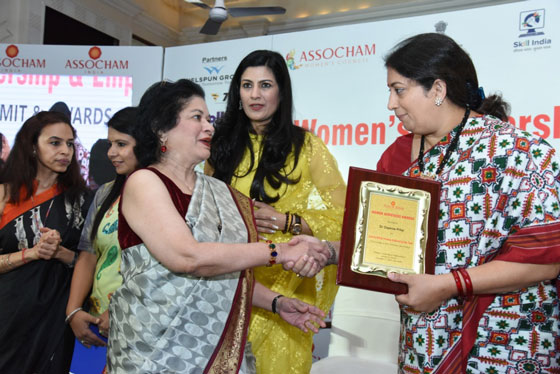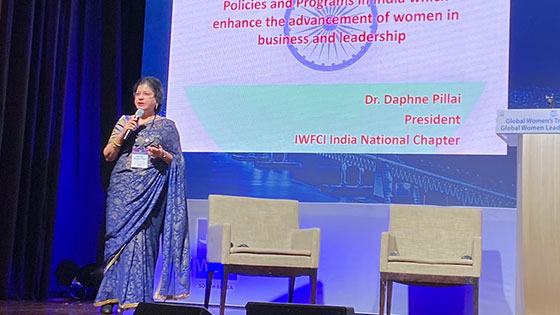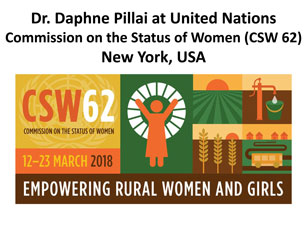‘The Glory that was Greece and the Grandeur that was Rome’ was the first chapter of my World History text book when I was studying for the Intermediate Arts at the Sophia College, Mumbai. The chapter fascinated me as I read all about the Roman Empire, it’s conquests, it’s architecture with it’s triumphal columns, it’s magnificent engravings and the valour of their warriors. It was then that the travel bug bit me badly, and year after year, we went to experience the ancient histories of Europe. So much so that the grandeur and glory of the civilisations in our own country got obscured in our minds with time.
‘Hampi’ was only a funny sounding word that I heard from my cousin Libania around 12 years ago. Libania is Portuguese and had come to visit India along with several of her friends from France and they had on their itinerary a visit to a place called ‘Hampi’. I did not realise it at that time that this place was already on the world map as a ‘Unesco Heritage Site’. It was discovered in the year 1799, and yet we had little or no knowledge of the existence of this place which was so close to home. Today the fifty rupee note of the Government of India has the picture of the Royal Chariot of HAMPI on the reverse side of the note.
The Famous Stone Chariot
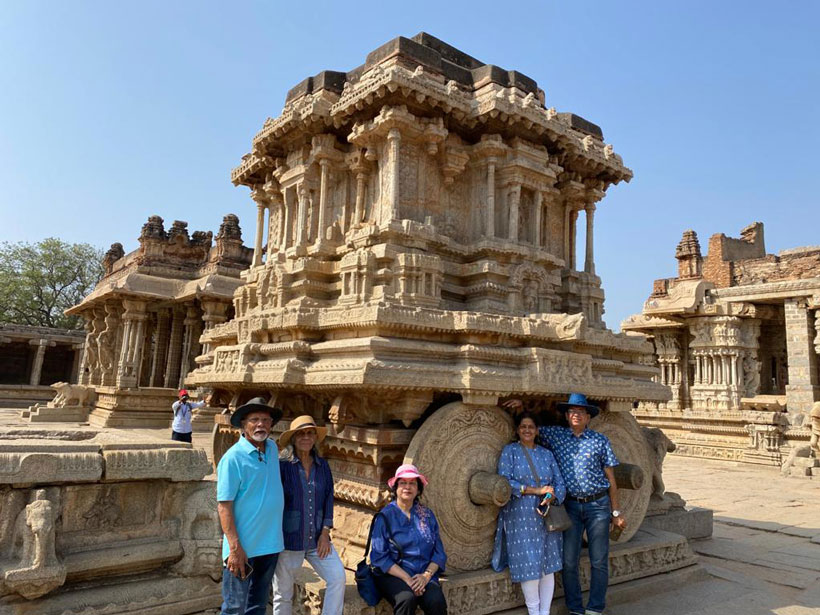
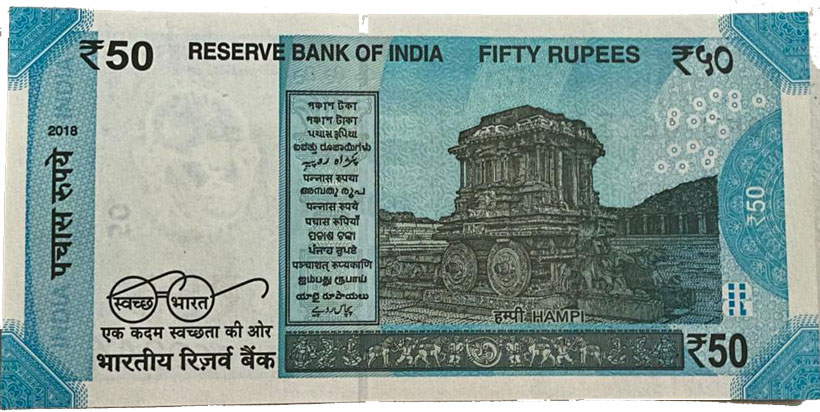
My dear friend Seeta Desai planned the visit to Hampi. She is a remarkable lady both headstrong and heartstrong and was bent on me joining her and her husband Ramrao Desai on the Hampi visit. My hubby Vasudevan did not join us as he had numerous engagements during that period. Either he has slowed down on travel OR he has slowed down on catching up with me on my travels.
The Carona virus scare was also at it’s peak when we set out. My son Franav tried his best to prevent me from going. He used all his influence to unsettle my plans, but the path mysteriously cleared for us and we took off by Air India from Mumbai to Hubli. God was definitely on our side. At Hubli we were met by Seeta’s cousin and his wife- Chetan and Usha Narvekar. They have lived most of their lives in Manipal and so Chetan could speak fluent Tulu and Kannada and was able to converse with the locals in their native language.
Day 1 we drove from Hubli to Hospet. Hospet is the city closest to Hampi. Though Hampi is full of boulders, rocks and granite, the road from Hubli to Hospet had rich landscapes of banana, maize and sugarcane plantations. We passed through the cotton fields of Bhandiwad and pockets of vineyards showing some of the grape growing regions in Karnataka. There was also one long stretch of road at Gadag where one could see tall energy generating windmills which gave the countryside a very distinguished bearing.
The Lush Banana Plantations
On Day 2 we visited the Sacred Area of Hampi. It is called the ‘Sacred Centre’ as it constitutes the temples of the Vijayanagar era. Majestic, monolithic structures with sculptures on every pillar. One gets totally awestruck just looking at the architectural wonder of an era gone by. On entering the welcome gates, one gets transported into huge courtyards and long sculptured colonnades housing various temples. There is a lot of walking to do but at the end of the climb one is able to sight the super structure of the Virupaksha temple.
The Temples of HAMPI
Glimpse of the Virupaksha Temple
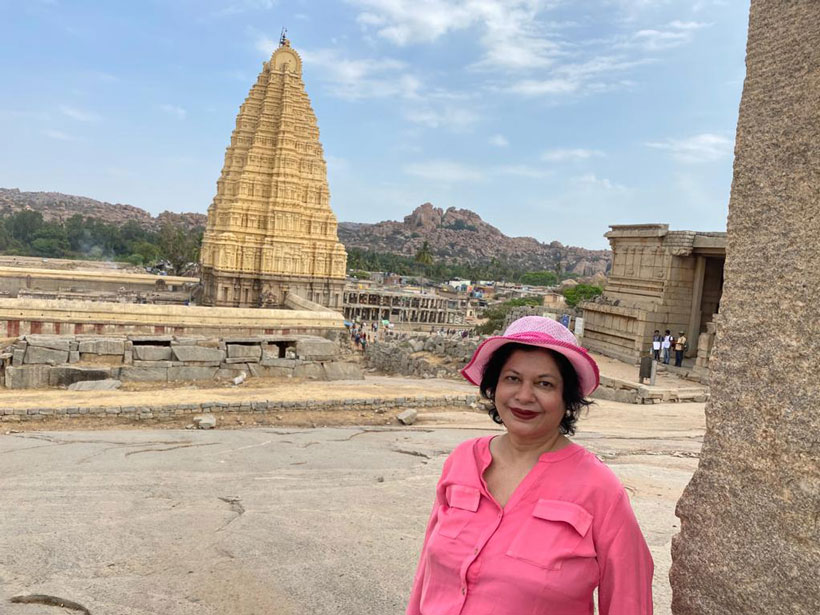
The afternoon was spent in the Queen’s palace region. When the kings went to war, their queens were sent to the ‘Zennana Enclosure’ where we got to view the Queen’s Bath, the Lotus Temple, the Stables of the Royal Elephants and the Barracks of the Mahuts of the Royal Elephants. What is unique about the ‘Zenana Enclosure’ is that the architecture of these monuments is a combination of Indo-Islamic styles suggesting a secular outlook of the kings of the Vijayanagar era.
The Stables of the Royal Elephants

The Interior of Royal Stables
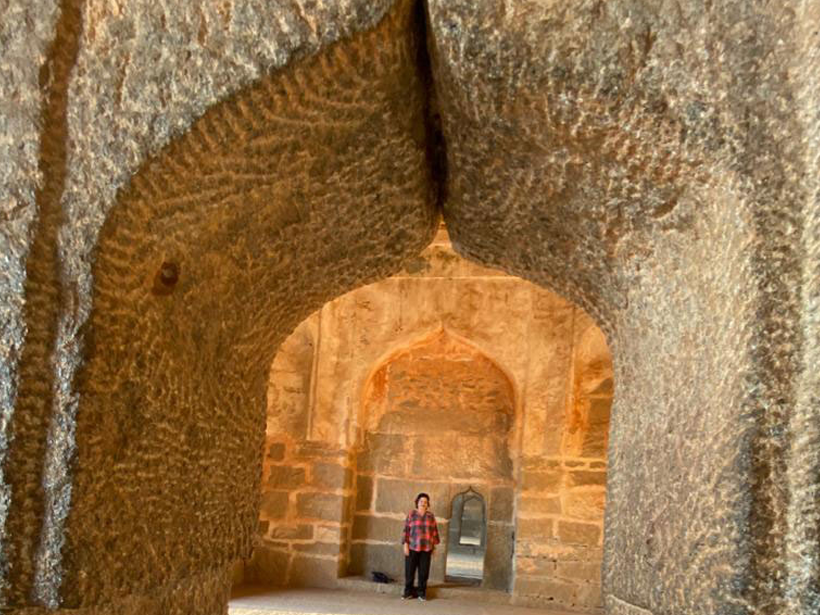
The Lotus Temple
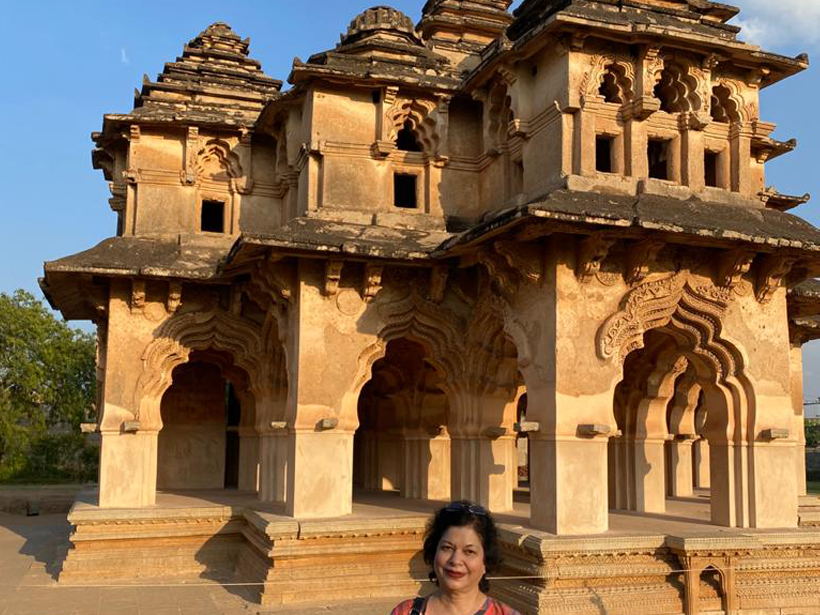
The Queen’s Bath
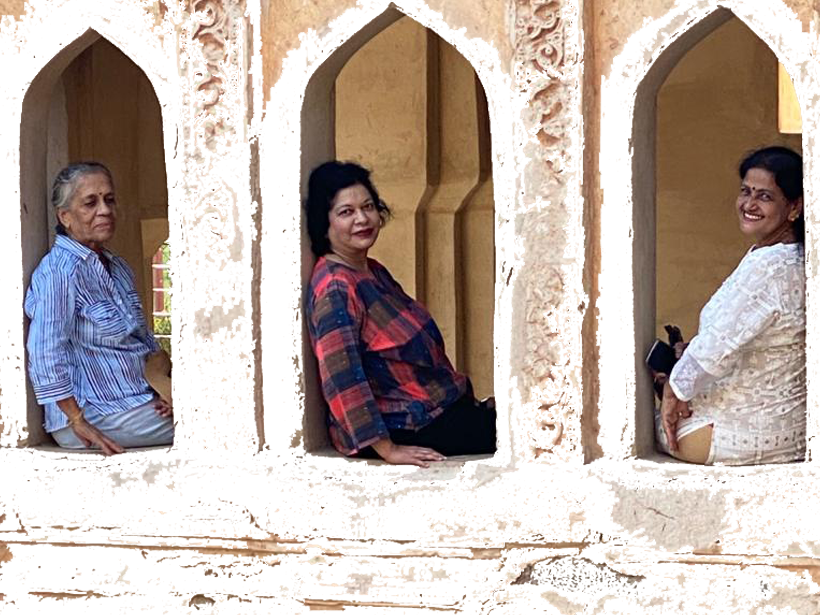
Smita Dalvi, my architect friend had told me not to miss the ‘Coracle’ boat ride in Hampi. The coracle boat ride is not on the regular tourist map of Hampi historical sites. Our guide did his very best to dissuade us from going there. But Seeta persisted and we got there in time to catch the Coracle ride just when the sun was about to set. It was real as well as surreal as we sat on the round shaped ‘Coracle’ made of wicker and our boatman Hufiya paddled us down the Tungabhadra river with the sunset in the background and the full moon rising above us. Our boatman cum guide did a great job in describing the different carved caves as he singlehanded oared the boat through one of my most fascinating cruises. Laterite mountains on either side of the river with caves carved into the rocks and with steps leading onto the interior of the caves. I remembered the cruises that we experienced in Europe and America -the Rhine in Germany, the glaciers of Alaska, the fjords in Norway, the sea birds coast in New Zealand and so many other cruises. Each of these cruises had their own unique topography and buoyant experiences. The Coracle boat ride along the Tungabhadra river made a deep and lasting impression on my mind and memories of the tranquil peace and serene waters will be remembered lifelong.
The Coracle
Day 3 was March 8th and International Women’s Day. It was a day full of surprises as all the sites were open to women free of charge. An electric car took us to the ‘Vijaya Vitthal Community Centre’ with several structures having magnificent carved stone pillars. There were sculptured Marriage Halls, Dancing Halls, Assembly Halls, Kitchen Halls, Chanting Halls and Dormitory Halls. The Music Hall, also called the ‘SAREGAMA’ Hall had pillars which would play different sounds of music when they were tapped on. A marvel of architecture and musical science. We were told by our guide that no person till date could figure out the science of the pillars which could create music in the correct note and scale when tapped on.
The site also boasts of the famous ‘Stone Chariot’ which is made out of rough quartz. The ‘Stone Chariot’ stands out as an amazing piece of artistic perfection with its base depicting mythical battle scenes. We all lingered there for awhile, soaking in the history of the Vijayanagara Empire which ruled from 1336 -1646 a glorious period of over 300 years.
Vijaya Vitthal Community Centre
Day 4, we leave for Mumbai. I had to record this travelogue else it would get lost in the deep recesses of my memory. I had to record the munching of the South Kanara grapes on our way to Hospet and the delicious juicy and crunchy watermelon that quenched our thirst after a hot day of sightseeing. Chetan and Usha made sure that we got a taste of the local fruits. And I must thank our very knowledgeable guide Mr. Thippana Gowda who made history come alive for us at every location and our driver Basvaraj for driving us safely through some rough terrain to drop us at our Hotel in Hubli. And to Seeta Ma’am as I call her, I say a BIG THANK YOU for your not taking a ‘NO” from me.
“Quenching thirsts”
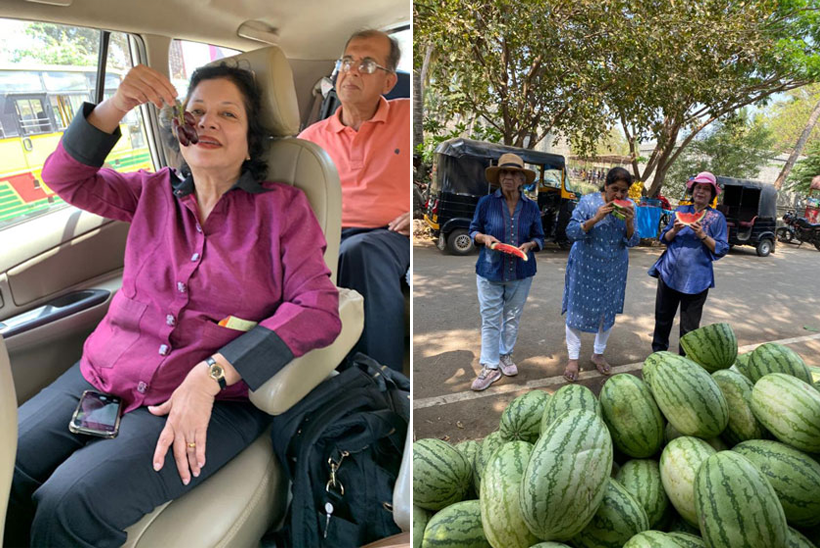
I am quite confident that I will visit Hampi again; till then Bye for Now.










